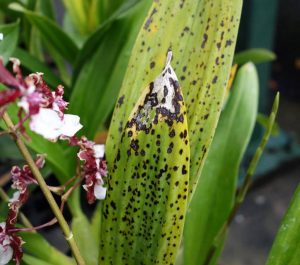5 Effective Ways to Remove Mealybugs from Plants
Tips and Suggestions for Mealybug Removal
- Inspect Your Plants Regularly: Routine inspection is key to catching mealybug infestations early. Look for telltale signs such as white cottony masses on plant stems and leaves, sticky honeydew residue, and distorted growth.
- Isolate Infested Plants: If you discover mealybugs on one of your plants, isolate it from the rest of your collection to prevent the infestation from spreading. This is especially important for indoor plants, where pests can quickly move from one plant to another.
- Manual Removal: For small infestations, manually removing mealybugs with a cotton swab or a blast of water can be effective. Simply dab the insects with rubbing alcohol or soapy water to kill them on contact.
- Natural Predators: Introducing natural predators such as ladybugs, lacewings, or parasitic wasps can help control mealybug populations. These beneficial insects feed on mealybugs and can provide long-term control without the need for chemical pesticides.
- Neem Oil: Neem oil is a natural insecticide derived from the neem tree that can be effective against mealybugs. Dilute neem oil according to the manufacturer’s instructions and spray it onto affected plants, making sure to cover all surfaces thoroughly.
Subtitle 3: Common Questions About Mealybugs
- Can mealybugs kill my plants? – While small infestations may not cause significant harm, severe infestations can weaken plants and lead to stunted growth or even death, especially in young or stressed plants.
- Are mealybugs harmful to humans? – While mealybugs themselves are not harmful to humans, they can produce honeydew, a sticky substance that can attract ants and promote the growth of sooty mold.
- How do mealybugs spread? – Mealybugs can spread from plant to plant through physical contact, wind, or by hitching a ride on clothing or gardening tools.
Conclusion:
In conclusion, dealing with mealybugs can be a frustrating challenge for plant enthusiasts, but with patience and persistence, it’s possible to effectively control and eliminate these pesky pests. By implementing the strategies outlined in this article, you can protect your plants from mealybug damage and ensure they thrive in a healthy environment. We hope you found these tips helpful, and we welcome your feedback and suggestions for managing mealybugs in your own plant collection. Happy gardening!
7 Effective Ways to Get Rid of Plant Fungus
Plant fungus can wreak havoc on your garden or indoor plants, causing unsightly damage and sometimes even leading to the death of your beloved greenery. But fear not! There are effective ways to combat and eliminate plant fungus, ensuring your plants stay healthy and vibrant. In this article, we’ll explore some tried and tested methods to help you tackle fungal infections and restore your plants to their former glory.

Plant Fungus Troubles
Throughout history, gardeners and farmers have battled against plant fungus, recognizing its destructive potential. From ancient agricultural practices to modern horticultural advancements, humans have continually sought ways to protect their crops and ornamental plants from fungal infections. Today, with our understanding of fungal biology and advancements in plant pathology, we have an array of tools and techniques at our disposal to effectively manage and eradicate plant fungus.
Tips and Suggestions for Fungal Control
- Identification is Key: Before you can effectively combat plant fungus, you must identify the specific type of fungus afflicting your plants. Different fungi may require different treatment approaches, so accurate diagnosis is crucial.
- Prune Infected Areas: Trim away any visibly infected plant parts, such as leaves, stems, or flowers. This not only removes the source of the infection but also helps improve airflow around the plant, creating less favorable conditions for fungal growth.
- Utilize Fungicides: Select a suitable fungicide for the type of fungus and plant you’re dealing with. Follow the instructions carefully, applying the fungicide as directed to ensure maximum effectiveness while minimizing harm to your plants and the environment.
- Enhance Air Circulation: Improve airflow around your plants by spacing them adequately, removing any obstructions that may impede airflow, and utilizing fans if necessary. Reduced humidity and better ventilation help create an inhospitable environment for fungal spores.
- Water Wisely: Avoid overwatering your plants, as excess moisture can promote fungal growth. Water at the base of the plant, keeping foliage dry, and consider watering in the morning to allow excess moisture to evaporate during the day.
- Explore Natural Remedies: Some natural substances, such as neem oil, baking soda solutions, or diluted hydrogen peroxide, can serve as effective fungicides. Experiment with these natural remedies, ensuring compatibility with your plants and the specific fungus you’re targeting.
- Maintain Plant Health: Healthy plants are better equipped to fend off fungal infections. Provide adequate nutrition, sunlight, and care to your plants, strengthening their natural defenses against pathogens.
Common Questions About Plant Fungus
- Can I prevent plant fungus from occurring? – Yes, practicing good gardening practices like proper watering, soil drainage, and plant hygiene can help prevent fungal infections.
- What are the signs of plant fungus? – Look out for wilting, yellowing or browning of leaves, powdery or fuzzy growth on plant surfaces, and unusual spotting or discoloration.
- Are all fungicides safe for use on edible plants? – Not necessarily. Always read and follow the label instructions, and choose products labeled for use on edible crops if treating fruits or vegetables.
Conclusion:
In conclusion, combating plant fungus requires a combination of proactive measures, careful observation, and targeted interventions. By following the tips and suggestions outlined in this article, you can effectively manage fungal infections and safeguard the health of your plants. Remember to stay vigilant, practice good plant care habits, and don’t hesitate to seek professional advice if needed. We hope you found this guide helpful, and we welcome your feedback and suggestions for future topics. Happy gardening!


